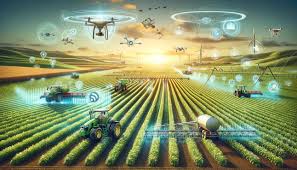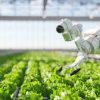Precision agriculture technology
Precision Agriculture Technology: Revolutionizing Modern Farming
Introduction:
In an age where efficiency, sustainability, and food security are top priorities, precision agriculture technology stands as a trans formative force in modern farming. This innovative approach integrates advanced technologies like GPS, IT, data analytics, drones, and AI to optimize agricultural practices. By enabling farmers to make data-driven decisions, precision agriculture not only boosts productivity but also reduces environmental impact and conserves resources.
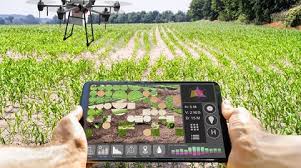
What Is Precision Agriculture technology?
Precision agriculture technology, also known as site-specific crop management or satellite farming, is a farming management concept that uses digital technologies to monitor and optimize agricultural inputs such as water, fertilizer, and pesticides. Instead of treating entire fields uniformly, this method allows for customized care tailored to the specific needs of each section of the farm.
Key Technologies in Precision Agriculture technology:
-
Global Positioning System (GPS) & Geographic Information System (GIS)
GPS allows for accurate field mapping, machinery guidance, and soil sampling. GIS integrates this data into detailed maps that help farmers make decisions about planting, fertilizing, and harvesting. -
Remote Sensing & Drones
Drones and satellites provide aerial imagery that reveals crop health, soil conditions, and pest infestations. This helps in early detection and timely intervention. -
Internet of Things (IT) & Smart Sensors
IT-enabled devices collect real-time data from the field—such as soil moisture, temperature, and nutrient levels—which is then transmitted to farmers’ smartphones or computers. -
Variable Rate Technology (V R T)
V R T allows farmers to vary the amount of input materials (like seeds, fertilizers, and pesticides) based on precise field conditions, improving efficiency and reducing waste. -
Artificial Intelligence (AI) & Machine Learning
AI analyzes vast amounts of data to identify patterns and recommend actionable insights for crop management, yield prediction, and resource allocation.
Benefits of Precision Agriculture technology:
-
Increased Productivity: Tailoring inputs to exact field needs leads to higher yields and better quality crops.
-
Cost Efficiency: Reduces unnecessary use of resources, lowering input costs.
-
Environmental Sustainability: Minimizes over-application of chemicals and water, reducing pollution and soil degradation.
-
Risk Management: Helps farmers make informed decisions, reducing the risk of crop failure due to pests, weather, or disease.
-
Labor Optimization: Automates repetitive tasks and supports better allocation of human resources.
Challenges in Adoption
Despite its advantages, precision agriculture faces several barriers:
-
High Initial Investment: The cost of equipment and technology can be a deterrent for small-scale farmers.
-
Technical Skills Gap: Farmers need proper training to interpret and act on complex data.
-
Connectivity Issues: In rural areas, limited internet access can hinder real-time data transmission.
-
Data Privacy Concerns: Farmers must trust that their data will be used ethically and securely.
The Future of Precision Agriculture technology:
As Precision agriculture technology becomes more accessible and affordable, the future of precision agriculture technology looks promising. Emerging innovations like robotics, autonomous tractors, blockchain for food traceability, and climate-smart agriculture practices are expected to further revolutionize farming.
Governments and a gr i tech startups are also playing a key role by offering subsidies, mobile apps, and support platforms to encourage wider adoption.
Precision agriculture technology: The smart of future of farming
Introduction;
In today’s data-driven world, Precision agriculture technology undergoing a digital transformation. With global challenges like population growth, climate change, and resource scarcity, traditional farming methods are proving insufficient. Precision agriculture technology, also called smart farming, provides a solution by blending farming with advanced technologies. This method allows farmers to manage crops more accurately and sustainably than ever before.
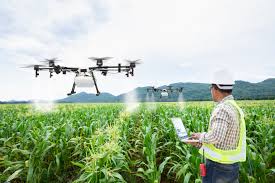
What is Precision agriculture technology?
Precision agriculture technology (PA) is an advanced farming management system that uses real-time data, location tracking, and automation to make farming more efficient. Instead of applying uniform treatments across an entire field, PA enables farmers to apply water, fertilizer, and pesticides precisely where and when they’re needed, based on the specific needs of individual plants or sections of land.
Core Technologies in Precision agriculture technology
1. GPS & G I S Mapping
-
Use: Field mapping, vehicle navigation, soil sampling.
-
Impact: Increases accuracy in planting and harvesting, reduces overlaps in treatment areas.
-
Example: Tractors equipped with GPS can follow preset paths for seeding with sub-inch accuracy.
2. Remote Sensing & Drones
-
Use: Aerial monitoring of crop health, pest detection, and water stress.
-
Impact: Enables early disease detection and reduces crop losses.
-
Example: Multi spectral drone cameras detect invisible signs of disease before they spread.
3. IT Devices & Smart Sensors
-
Use: Monitor soil moisture, temperature, humidity, and nutrient levels.
-
Impact: Supports irrigation scheduling and input optimization.
-
Example: A soil sensor sends real-time alerts when moisture levels drop below a threshold.
4. Variable Rate Technology (V R T)
-
Use: Apply seeds, fertilizers, and chemicals at varying rates across a field.
-
Impact: Reduces waste, increases yield.
-
Example: A sprayer adjusts pesticide amounts automatically based on weed density data.
5. Big Data Analytics
-
Use: Analyze data from various sources—weather, sensors, satellite—to make predictions.
-
Impact: Informs decisions about planting schedules, crop selection, and yield estimation.
6. Artificial Intelligence (AI) & Machine Learning
-
Use: Predict pest outbreaks, recommend planting strategies, automate equipment.
-
Impact: Reduces human error and improves decision-making.
-
Example: AI models predict the best time for harvest based on crop maturity and weather forecasts.
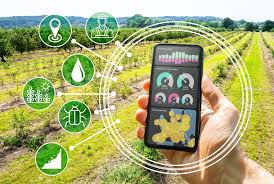
Challenges in Implementation in Precision agriculture technology
Despite its advantages, there are several hurdles:
-
High Initial Costs: Equipment like drones, sensors, and GPS-enabled machines are expensive.
-
Digital Divide: Farmers in remote areas may lack internet access or technical literacy.
-
Data Overload: Too much data without proper interpretation can confuse rather than help.
-
Maintenance & Reliability: Tech tools require upkeep and may malfunction without support.
Global Adoption and Real-World Examples
-
United States: Companies like John Deere and trimble are pioneers in precision equipment.
-
India: Startups like Cropin and Fasal provide mobile-based analytics and sensor systems to small-scale farmers.
-
Brazil: Using precision tools in soybean farming has significantly increased output with reduced pesticide use.
-
Europe: Precision livestock farming uses sensors and cameras to monitor animal health and welfare.
Future Trends in Precision agriculture technology
-
Robotics & Autonomous Equipment
Robots will soon handle tasks like weeding, harvesting, and planting with minimal human input. -
Blockchain in Agriculture
Ensures transparency and traceability in the food supply chain. -
Climate-Smart Agriculture
Combining data and tech to build climate resilience into crops. -
AI-Powered Farm Management Platforms
One-stop dashboards for monitoring all field activities, inputs, and yields. -
Edge Computing
Enables real-time decision-making even without internet access by processing data locally.
🌐 1. GPS (Global Positioning System)
-
Purpose: Accurate location tracking for field mapping, seeding, and harvesting.
-
Benefits: Enables guided tractors, reduces overlapping, saves fuel and time.
🗺️ 2. G I S (Geographic Information System)
-
Purpose: Collects and analyzes spatial data about soil types, elevation, and crop performance.
-
Benefits: Helps in creating prescription maps for precise input application.
3. Remote Sensing (Satellites & Drones)
-
Purpose: Captures aerial images to monitor crop health, water stress, pest/disease presence.
-
Benefits: Enables early detection of issues before they spread.
4. IT (Internet of Things) and Smart Sensors
-
Purpose: Real-time monitoring of soil moisture, temperature, humidity, and nutrient levels.
-
Benefits: Improves irrigation and fertilization scheduling.
5. Variable Rate Technology (V R T)
-
Purpose: Adjusts the rate of seed, fertilizer, or pesticide application in different zones.
-
Benefits: Reduces waste, increases yield, minimizes environmental impact.
🧠 6. Artificial Intelligence (AI) & Machine Learning
-
Purpose: Analyzes big data to predict crop yield, pest outbreaks, and optimal planting times.
-
Benefits: Supports smarter and more accurate farm decisions.
7. Big Data Analytics
-
Purpose: Integrates data from multiple sources—weather, satellite, sensors—for analysis.
-
Benefits: Helps optimize inputs and predict outcomes more reliably.
8. Robotics & Automation
-
Purpose: Autonomous machines for planting, spraying, and harvesting.
-
Benefits: Saves labor, increases precision, and operates 24/7 in some conditions.
9. Smart Irrigation Systems
-
Purpose: Uses weather forecasts and soil data to deliver water only when needed.
-
Benefits: Reduces water use, prevents over-irrigation.
10. Blockchain Technology
-
Purpose: Tracks food from farm to table with secure data sharing.
-
Benefits: Increases transparency, trust, and food safety.
11. Edge Computing
-
Purpose: Processes data locally on the farm rather than sending it to the cloud.
-
Benefits: Enables real-time decision-making even without internet.
A. Mapping, Monitoring & Analysis Technologies
1. GPS (Global Positioning System)
-
Use: Locates exact positions on the farm for planting, spraying, and harvesting.
-
Example: Auto-guided tractors that follow precise routes with less than 2 cm error.
2. GIS (Geographic Information System)
-
Use: Analyzes spatial data like soil type, elevation, yield maps.
-
Example: A GIS map showing which zones need more fertilizer based on past harvest data.
3. Remote Sensing (Drones, Satellites)
-
Use: Captures high-resolution aerial images.
-
Example: A drone with multispectral sensors can detect crop stress invisible to the naked eye.
B. Soil & Crop Health Monitoring Technologies
4. Soil Sensors
-
Use: Measure moisture, temperature, pH, salinity, and nutrient levels.
-
Example: A buried sensor sends alerts to a farmer’s phone when soil needs water.
5. Plant Health Imaging (N D V I Cameras)
-
Use: Normalized Difference Vegetation Index (N D V I) images show how healthy plants are.
-
Example: Drones equipped with N D V I cameras identify pest-affected areas for quick response.
6. IT Devices (Internet of Things)
-
Use: Connect sensors and equipment to cloud platforms.
-
Example: An irrigation controller connected to weather forecasts adjusts watering schedules automatically.
C. Precision Input & Equipment Control Technologies
7. Variable Rate Technology (V R T)
-
Use: Applies inputs (fertilizer, pesticide, seed) at different rates across a field.
-
Example: Fertilizer spreaders apply more nutrients to low-fertility zones, less to rich zones.
8. Smart Tractors and Implements
-
Use: GPS-guided, automated tractors that perform tasks like tilling, planting, and spraying.
-
Example: A self-driving tractor that adjusts seed spacing based on soil quality.
9. Section Control Systems
-
Use: Automatically turn off equipment sections (like sprayer nozzles) in overlap areas.
-
Benefit: Saves input costs and avoids over-application.
D. Data Management & Decision-Making Tools
10. Farm Management Software Platforms
-
Use: Centralized software to manage field activities, labor, inputs, costs, and crop cycles.
-
Examples: Trimble Ag Software, Climate Field View, Ag Leader, Cropin.
11. Big Data Analytics
-
Use: Integrates weather, sensor, satellite, and historical data for trend analysis.
-
Example: Predicting which fields are most at risk of drought stress next season.
12. Artificial Intelligence (AI) & Machine Learning
-
Use: Learns from data to make smart recommendations or automate decisions.
-
Example: AI that recommends the best day to apply pesticide based on pest behavior and weather.
E. Automation & Robotics
13. Agricultural Robots (AgBots)
-
Use: Perform labor-intensive tasks like planting, weeding, and harvesting.
-
Examples: Robotic arms for picking fruits or weed-removal bots.
14. Autonomous Vehicles
-
Use: Driverless machines guided by GPS, sensors, and AI.
-
Example: Combine harvesters that harvest without a human operator.
F. Traceability & Food Supply Chain Technologies
15. Blockchain
-
Use: Securely tracks every step of the crop’s journey from farm to shelf.
-
Example: A QR code on a product shows consumers where it was grown, by whom, and how.
G. Climate & Weather-Responsive Tools
16. Weather Forecast Integration
-
Use: Connects farm systems with live weather updates.
-
Example: Postponing irrigation or fertilizer spraying if rain is predicted.
17. Climate-Smart Decision Tools
-
Use: Helps farmers plan for climate change impacts.
-
Example: Choosing drought-resistant seeds based on rainfall prediction models.
H. Real-Time Decision & Edge Computing
18. Edge Computing
-
Use: Processes sensor data on-site instead of in the cloud.
-
Example: A drone that instantly alerts the farmer about a diseased plant without needing internet.
I. Mobile Apps & Farmer Dashboards
19. Mobile Agricultural Apps
-
Use: Deliver advice, alerts, and analytics directly to farmers.
-
Example: An app sends planting reminders and input recommendations for each field zone.
20. Digital Twins of Farms
-
Use: Virtual simulation of farm environments to test different decisions digitally.
-
Example: Simulating how different irrigation schedules affect crop growth before implementation.
